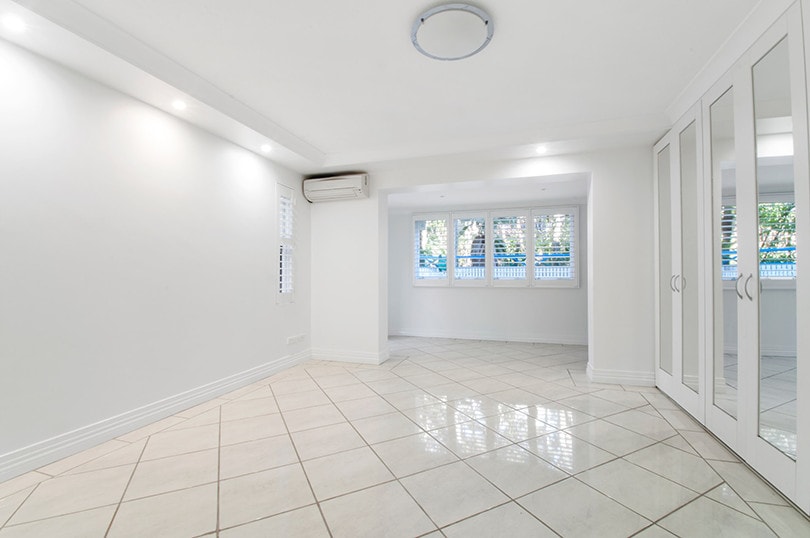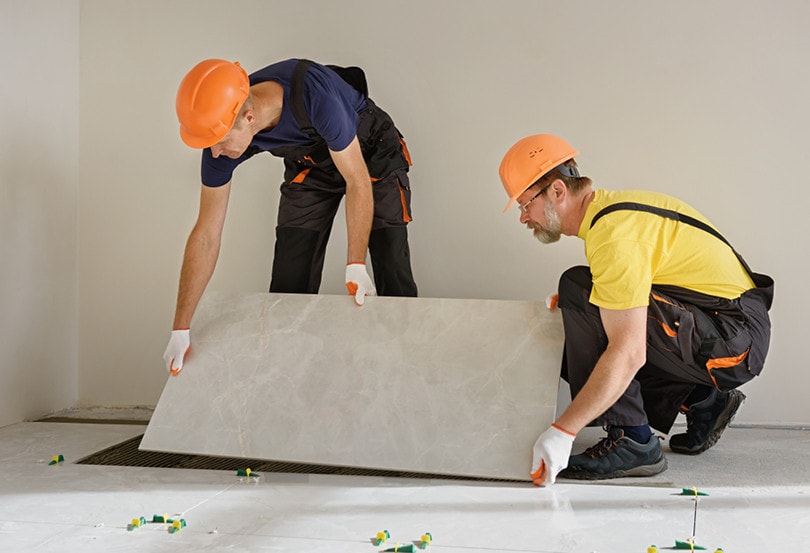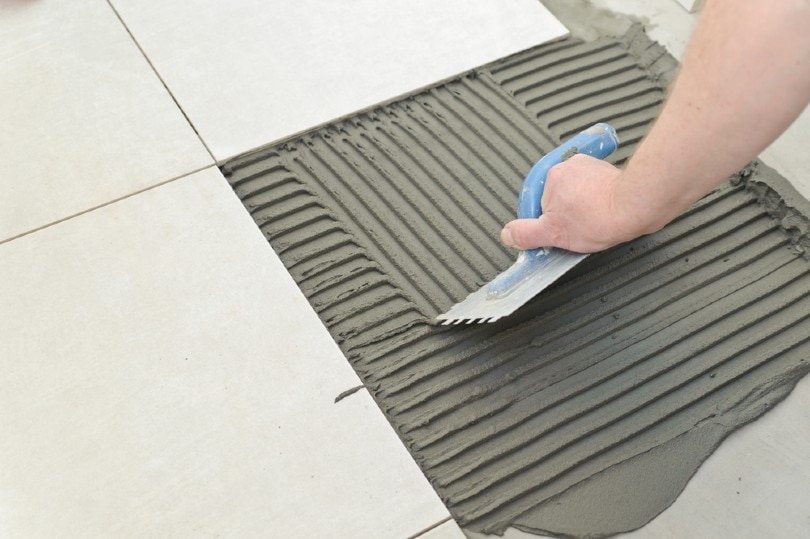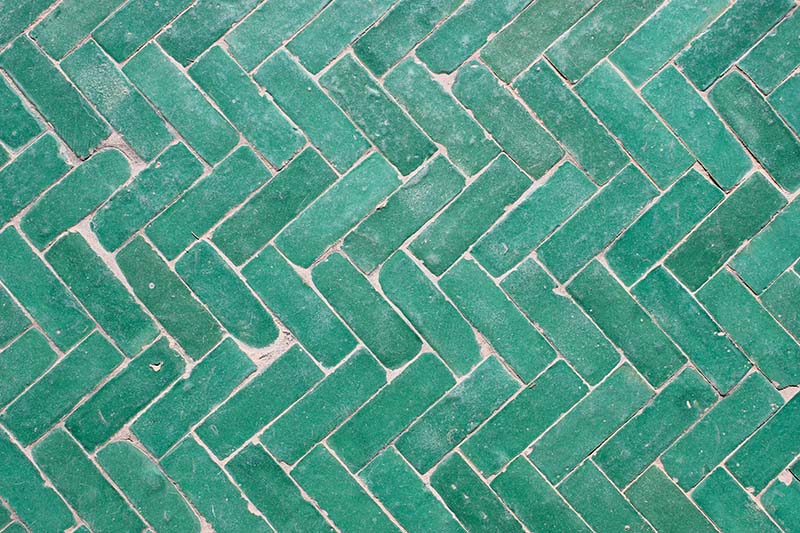What Are Field Tiles? Types, Uses, & FAQ
-

- Last updated:

If you are in the market for new tile floors, you have likely come across the term field tile. At first glance, it is not apparent what field tile means or what it is referring to. In the case of interior design and home decor, field tiles are not referring to the drainage sections that farmers bury in their fields for irrigation. Field tiles refer to a type of tile that is used to cover large areas in a home and are one of three main types of tiles used for interior decorating.
If you have tile floors in your house, you have some sort of field tile. It is likely the tile that dominates your kitchen or living room, or even your bathroom. You will often hear designers refer to field tiles when offering choices for the main tile that is going into space.
This brief guide will tell you everything you need to know about field tiles, including how to identify them, how they are used, where you will see them the most often, and the difference between them and other types of design tiles. By the end, you will have a leg up with some new interior design knowledge and lingo that could help you make a more informed decision about your floors going forward.
How Does It Work?
Field tiles are named because they cover a large area and dominate a person’s field of view. If you walk into a tiled kitchen, for example, the large number of identical tiles that make up the bulk of the area of the floor is the field tiles. Field tiles work by covering large areas of the floor with as few tiles as possible. Field tiles are often an important decision in interior design because they will take up the most space and dominate the look of a room. People do not want field tiles that clash with surrounding design decisions, and many people do not want field tiles that are too busy or loud because of their size and prevalence.
Field tiles are often larger than other types of tiles and can come in sizes ranging from 4” x 4” to 24” x 24”. Field tiles are the ones that cover the most amount of space in a room. Usually, the area covered is not even close, but it could be. If you have a room with 250SqFt of white tile and 200SqFt of stone tile, the white tile would be considered the field tile. However, in most cases, the difference in the area covered is vast enough that you notice it right away.
Field tiles can occupy multiple different spaces. Outdoor tile on a patio can be field tile. The main tile in a bathroom can be field tile. The main flooring that runs throughout the house can be field tile. In each one of these cases, the tiles can be completely different from one another but still function as field tiles for their individual spaces.

What Are the Different Types of Field Tile?
Field tiles can come in a variety of different materials. The type of tile does not signify a field tile. The usage does. Any tile can be a field tile if it is the primary tile used on a floor. For this reason, field tiles can be any type of reasonable floor tile. Most tiles used specifically for flooring are generally at least 6”x6” and come in either porcelain or ceramic. But there are a variety of other tiles that could be used as field tiles.
- Porcelain
- Ceramic
- Glass
- Clay
- Stone
Each one of these tiles has its own unique look and characteristics. Some are more popular than others, and some are only popular in certain geographic regions. However, porcelain and ceramic are by far the most common types of flooring used as field tile.

Where Is It Used?
Field tile can be used in any space that has tile floors. Tile floors can be found in any room of the house and whatever the primary tile is for each room is the field tile. For example, if you have gray tiles in the kitchen and dining room, that is the field tile for that space. However, you might have a small white penny tile in your bathroom. The penny tile in the bathroom is that space’s field tile.
Bathrooms and kitchens are the two most common rooms that consistently feature tile floors. Tile floors can also be featured in entryways, mudrooms, basements, bedrooms, hallways, offices, and outdoor patios.
Advantages of Field Tiles
Field tiles have a lot of advantages. They are usually larger than accent or border tiles which makes them cheaper and easier to install. They are easy to source, require less tile per square foot than smaller tiles, and they are durable. Field tiles are designed to be installed in high-traffic areas, so they are often strong and can take a lot of wear and tear over the years.

Disadvantages of Field Tiles
One of the downsides of field tiles is that they are usually bland. Field tiles are generally flat and monochromatic. That is because most large floor spaces want a large neutral pallet rather than a busy patterned relief. This can cause field tiles to appear boring or neutral compared to more festive accent and border tiles. There are fewer options for warmth, pattern, and texture with standard field tile than there are with, say, wood floors or vinyl plank. There are many more options in terms of color, texture, thickness, and size with other types of flooring compared to field tile.
Field Tile vs. Border Tile
While field tile comprises the largest part of a room, border tiles serve a different purpose. Border tiles, as their name suggests, rim field tiles to create a border. This is most commonly seen around transitional areas, around major doorways, or as a part of a design for a very large room. For example, a large living room decked out in simple white tile could be bordered by a dark granite tile to create a contrast. Similarly, some owners’ suite bathrooms will have border tiles that separate the main floor from the shower or the tub.
Border tiles are usually smaller than field tiles. They are often a different color that contrasts or compliments the color of the field tile. Border tiles can feature busier designs and more patterns and colors than field tiles typically do.
Border tiles are often seen around the edges of a room or near transitions that separate one room from another.

Field Tile vs. Accent Tile
Accent tiles are tiles that are added to field tiles or border tiles to break up the design and add more texture, color, or pattern to a design. If you have ever seen a tile floor with colored or patterned tiles sprinkled throughout, those tiles are accent tiles. If you have a floor pattern that adds a chevron tile every third tile, those chevrons are accent tiles. Accent tiles are most commonly found in bathrooms and in backsplashes, but they can be found on the main floor as well.
Large spaces of white tile can be boring and monotonous, so designers will add tiles with extra color or texture to break the space up. Some typical types of accent tiles are heavily patterned tiles, multiple tiles that, when put together, form a larger pattern, colored tiles that don’t match the field tile, and stars. Anything that breaks up field tiles and draws your eye is often an accent tile.
Can You Use a Smaller Tile as Field Tile?
You can use any tile as a field tile, but it could come with some drawbacks. First, make sure that any tile you choose is fit to be the main floor tile. Not all tiles are designed for high foot traffic, and some tiles that you think are pretty might not hold up under continuous walking or working. Second, border tiles and accent tiles are often smaller than field tiles. That means to cover a large space, you will need to buy more tiles, and that can greatly increase installation costs and material costs.
For example, if you want to cover an area measuring 1,000SqFt the number of tiles could quickly multiply if you opt to use a smaller tile. A typical large field tile measures two feet by two feet, a total of four square feet. In that case, you will need 250 total tiles to cover the area and likely 10 additional tiles to account for corners or waste. If you decide to go with a smaller border tile that only measures, say, four inches by four inches, you will instead need a whopping 750 tiles to cover the same area. More tiles mean more money, more labor, more materials, and more time to install, which can quickly become a headache. If you do decide to use the small tile as your field tile, you totally can, and then the small tile would be considered the field tile in your home.
Always be sure that the tile you are selecting can be used as an effective floor tile. Also, be sure to check the quote for materials and labor to avoid big surprises in cost.
Conclusion
There are tiles specifically designed to be used as field tiles, but there are no specific tiles that automatically constitute a field tile. Field tiles can be made up of tiny penny tiles and bordered by broad floor tiles. The penny tiles would still be considered field tiles. Field tile is a feature of design rather than a specific product. If you have any tile floor in your home, you likely have a field tile of some sort. You probably just didn’t realize it.
See also:
Featured Image Credit: Steven Ungermann, Unsplash
Contents

